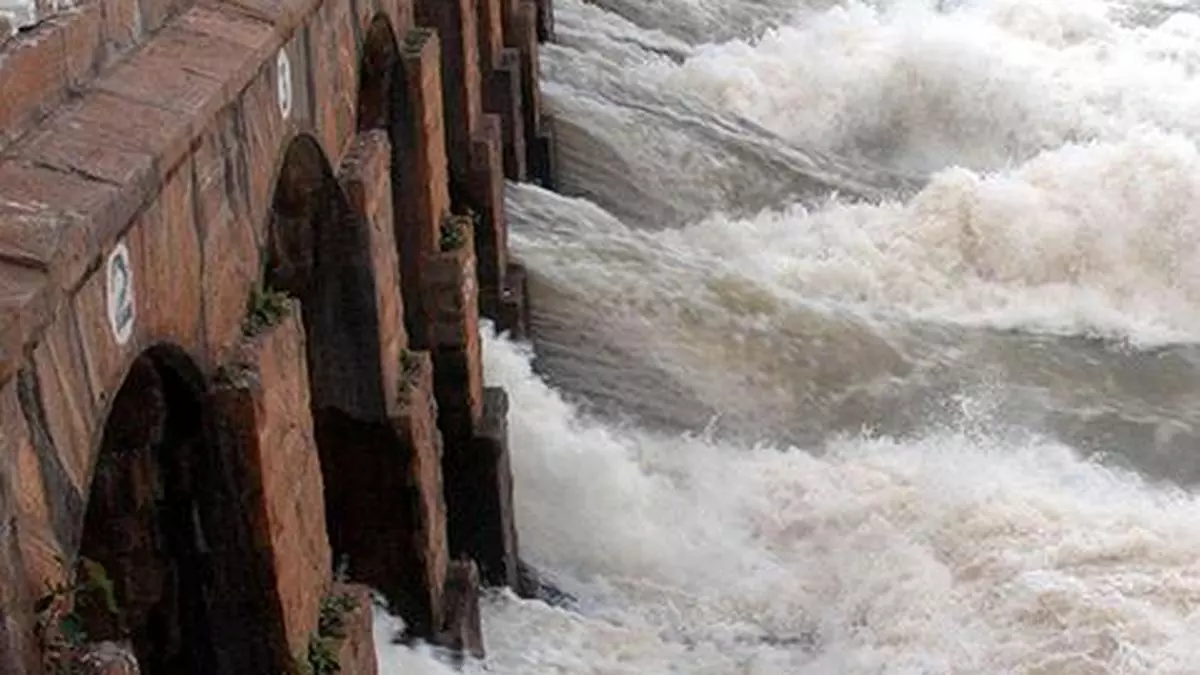Water level lower than normal in 13 States despite storage in key Indian reservoirs rising for 3rd week in a row
The water storage level in India’s 150 major reservoirs improved for the third week in a row, though it declined in the northern region, data from the Central Water Commission (CWC) showed.
At least 13 States have storage lower than normal, though the number of reservoirs that had gone dry has decreased to three from seven a month ago, CWC’s weekly bulletin on live storage status of 150 reservoirs in the country said.
The reservoirs had a level of 29 per cent (26% last week) of the total capacity of 178.784 billion cubic metres (BCM), at 52.722 BCM. Of the 150 reservoirs, the storage in 119 of them is still below 50 per cent of the capacity. The level in 95 of the 119 is below 40 per cent of the capacity.
Excess rain
The storage in the reservoirs has improved following a nine per cent excess rainfall in the first half of July after a 11 per cent deficiency in June. Though the south-west monsoon slowed in the second week, it is expected to intensify in the second half.
On Thursday, the India Meteorological Department (IMD) said cumulative rainfall during the monsoon was three per cent deficient as of July 18. Of the 724 districts from where data have been received, 39 per cent have received deficient rainfall.
While the southern region has received 19 per cent excess rainfall, the north-west and central regions – key to kharif crops production – have received 10 and 4 per cent deficient rains, respectively. The eastern and north-eastern parts have received 12 per cent lower than normal rainfall.
The IMD said widespread rainfall is likely over the next three days except the north-west and eastern peninsula. This will likely improve the storage as the IMD has predicted above-normal rainfall this month.
According to CWC weekly status of reservoirs, the storage in the southern region improved to 34 per cent (28 per cent) of the 53.334 BCM capacity at 17.965 BCM. However, barring Kerala (13 per cent above normal) and Karnataka (25 per cent above normal, the level in Tamil Nadu, Andhra Pradesh and Telangana is lower than usual.
Karnataka benefits
A significant feature is that the situation in Karnataka is better than last year (51 per cent of capacity vs 20 per cent). The Kabini is filled to 91 per cent of its capacity, Hemavathy 74 per cent, Harangi and Almatti 75 per cent each and Krishnaraja Sagara 66 per cent.
Of the 42 reservoirs in the southern region, the level in 26 is below 50 per cent of the capacity. All the 10 reservoirs in the northern region are filled less than 50 per cent of the capacity. However, there are no concerns over the kharif crops since these States are served well by canal irrigation.
The level was 29 per cent (30 per cent) or 5.781 BCM of the 19.663 BCM capacity. In Punjab, the level is 56 per cent lower than usual, while in Himachal and Rajasthan, it is 22 per cent and 26 per cent below normal.
In the central region’s 26 reservoirs with a capacity of 48.227 BCM, the storage was 28 per cent at 13.445 BCM. The level in 20 of the reservoirs was below 40 per cent of the capacity. Barring Uttarakhand, the other three States had storage below normal.
IMD warning
In Madhya Pradesh, the level was 21 per cent lower than usual, in Chhattisgarh it was 42 per cent below normal and in Uttar Pradesh, it was 20 per cent lower than normal. However, the IMD has warned of “very heavy rainfall” in parts of Madhya Pradesh over the next couple of days.
Of the 49 reservoirs in the western region, the level in 33 was below 40 per cent of the capacity and in 11 below 50 per cent. The storage in the region was 31 per cent of 37.130 BCM capacity at 11.330 BCM.
In the eastern region’s 23 reservoirs, the level was 21 per cent of the 20.430 BCM capacity at 4.201 BCM. The level in 15 of them was below 40 per cent. The level was 61 per cent below normal in Bihar, it was 45 per cent lower than usual in West Bengal and 38 per cent below normal in Odisha.
